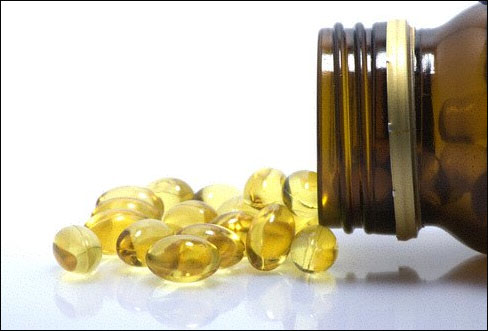 Vitamin-D, the forgotten necessity of life. By Dan Eden for viewzone A friend recently sent me some interesting material on plagues that killed millions of people in Europe and Asia. Someone has found a link between pandemics, like The Black Death and Bubonic Plague, and meteors, earthquakes and large volcano eruptions. The articles were trying to make the case that certain noxious gases could have been released in to the atmosphere which caused the coincident diseases. Black Death, one of the most deadly pandemics in human history, is said to have killed two thirds of the entire population of Europe, not to mention millions all over the planet in 542 AD. Analysis of tree rings for this same period shows that the climate changed in different parts of the world. Temperatures dropped enough to hinder the growth of trees in northern Europe, Siberia, western North America, and southern South America. A search of historical records and mythical stories points to a disastrous visitation from the sky during the same period. There was one reference to a "comet in Gaul so vast that the whole sky seemed on fire" in 540-41. According to legend, King Arthur died around this time, and Celtic myths associated with Arthur hinted at bright "sky Gods" and "bolts of fire." In the 530s, an unusual meteor shower was recorded by both Mediterranean and Chinese observers. Meteors are caused by the fine dust from comets burning up in the atmosphere. Furthermore, a team of astronomers from Armagh Observatory in Northern Ireland published research in 1990 which said the Earth would have been at risk from cometary bombardment between the years 400 and 600 AD.
Did lack of sunshine contribute to the palgue? Considering the tree rings and reports of dark skies, crop failures and general ill health before the plagues, I cannot but wonder if the lack of sunshine made the human population deficient in Vitamin D. This important vitamin is just now getting studied for its vital role in a maintaining a healthy immune system.
On March 7, 2010, Scientists at the University of Copenhagen have discovered that Vitamin D is crucial to activating our immune defenses and that without sufficient intake of the vitamin, the killer cells of the immune system - T cells - will not be able to react to and fight off serious infections in the body.
"For T cells to detect and kill foreign pathogens such as clumps of bacteria or viruses, the cells must first be 'triggered' into action and 'transform' from inactive and harmless immune cells into killer cells that are primed to seek out and destroy all traces of a foreign pathogen. William Faloon, writing for LifeExtension, reports:
Vitamin D from all sources (sunlight, sun lamps, or supplements) reduces the incidence of respiratory infections [1]. Dutch children with the least sun exposure are twice as likely to develop a cough and three times more likely to develop a runny nose compared with children with the most sun exposure [2]. Other studies confirm this:
"We don't want to jump ahead of ourselves, but our study provides support that lower levels of vitamin D are associated with an increased risk for respiratory infections, such as the common cold and the flu. And people who have pre-existing respiratory disease -- like asthma an emphysema -- appear to be at an increased risk for this association." -- Dr. Adit Ginde, Assistant Professor of Surgery in the division of emergency medicine at the University of Colorado Denver School of Medicine. [Ginde's team, from Harvard Medical School and Children's Hospital Boston, reports its findings in the Feb. 23 issue of the Archives of Internal Medicine.] I have included some other benefits of Vitamin D below. As you will see, the importance of this vitamin crosses all ages and bodily systems. Although the conservative daily requirement is still listed as 400 IU for adults, many nutritionists are increasing this number in light of the recent research.
 Vitamin D Supplementation Associated With Reduced Cardiovascular Risk Researchers announced at the 59th Annual Scientific Sessions of the American College of Cardiology (ACC), that supplements to normalize the daily requirements of Vitamin-D have shown to significantly reduce the risk of cardiac problems. The announcement came after a research project in which Joseph Muhlestein, MD, Intermountain Medical Center, Murray, Utah, and colleagues analysed data from 27,686 Utah residents who were followed for an average of 1.3 years. Data from this study showed that patients with very low levels of vitamin D were 77% more likely to die, 45% more likely to develop coronary artery disease, and 78% more likely to have a stroke, as compared with individuals with normal vitamin D levels. To test for causality, Dr. Muhlestein evaluated data from 9,491 of these patients with low initial vitamin D levels and with at least 1 recorded follow-up level. A total of 4,507 (47% of individuals) increased their vitamin D level to >30 ng/mL. Significant differences in coronary artery disease (P = .04), heart failure (P = .04), and renal failure (P = .0001) were found when patients with very low vitamin D levels (10-19 ng/mL; n = 1,256) were compared with those with higher levels (>= 44 ng/ml ; n = 1,670). A strong trend towards increased death was also revealed (P = .06).
"Our data suggest that normalising deficient vitamin D levels is associated with reduced cardiovascular risk and suggest confirmation through clinical trials," -- Dr. Muhlestein.He noted further that a randomised National Institutes of Health primary prevention trial is ongoing with subjects receiving 2000 IU/day of vitamin D. He cautioned in an interview, however, that sometimes patients who are deficient need up to 5000 IU/day to normalise their vitamin D levels. Low Vitamin D Level in Elderly Patients Tied to Cognitive Decline Two new studies add to evidence that older people with low levels of vitamin D may be more likely to suffer from cognitive impairment. Whether vitamin D has a role in memory and cognition is unclear and studies have had conflicting results. To help answer the question, researchers studied about 150 people aged 70 and older living on their own. Their average age was 85, and about three-fourths were women. In the first study, participants' vitamin D levels ranged from 9 to 90 nanograms per milliliter of blood. Levels of 30 or higher are considered normal, according to researchers. All participants were given a standard 30-point test that is used to screen for cognitive impairment. Results showed that the lower their score on the test, the lower their vitamin D levels. The average vitamin D level was 42.8 for the 42 participants with a perfect score of 30 on the test; 36.7 for the 89 participants who scored between 27 and 29 ("still normal but lower,"), and 34.8 for the 21 people with scores of 22 to 26 ("mild cognitive impairment"). The study also showed that lower vitamin D levels were associated with a greater risk of falling. The second study was presented at the annual meeting of the American Academy of Neurology and involved 752 women, aged 75 and older, in France. A total of 129 of the women had vitamin D levels that were below 10 nanograms per milliliter, suggesting vitamin D deficiency, which is common among older women, says Cedric Annweiler, MD, of Angers University Hospital. Compared to women with higher vitamin D levels, those with levels below 10 were about twice as likely to have cognitive impairment, as measured by a standard test of cognitive skills. The researchers plan to follow the women for seven years to see whether those with low vitamin D levels are more likely to develop Alzheimer's disease or other dementia, Annweiler says. "People with dementia or cognitive impairment tend to become socially isolated and less physically active, so they're less likely to get outside to get the benefits of the sun's vitamin-D-producing ultraviolet light." -- Dr. Annweiler So how much vitamin D should we be getting? Leading experts on Vitamin D suggest that optimal doses for adults are between 4,600 and 10,000 IU, with persuasive evidence that 10,000 IU a day of supplemental vitamin D is not toxic [7]. It has been estimated that winter sunshine provides just about 5-10% of the needed exposure obtained by the same amount of time in the summer sun. That being said, we are reminded that if we could have total body exposure to winter sunshine for only as little as 20 minutes daily, we would more than meet our daily requirement. While that is no possible in cold climates, where nudity would be uncomfortable, exposure to parts of the body (i.e. face and arms) may require more than an hour in the sunlight. It appears that supplements of Vitamin D may be the most convenient method, but however it is achieved, Vitamin D is looking more like it is vital to good health and longevity. We are once again reminded that we are all children of the Sun.

All pregnant women should be given vitamin D supplements to safeguard their babies' health, researchers have claimed. Published: 1:03PM BST 04 Jul 2010 Pregnant women should receive vitamin D supplements, research has claimed A The study contrasts with official guidance from the National Institute of health and Clinical Excellence (NICE) which does not support the provision of supplements. However, experts claimed that women who do not have enough vitamin D can experience complications in pregnancy which could be life-threatening for a new-born. It could also lead to the development of diseases such as rickets and other deficiency linked conditions.
Her report in the British Journal of Nutrition called for a unified approach from health authorities towards supplements and said that vitamin D deficiency is "largely being overlooked by our health professionals". The Department of Health advises pregnant women to ensure they receive 10 micrograms per day of vitamin D, which the researchers claimed cannot be provided by diet and the sun alone. But the NICE said that women should simply "be informed" about the importance of having adequate vitamin D levels during their pregnancy and while breastfeeding - adding that some women may choose to do this via supplements. Pregnant women on low incomes are entitled to receive supplements free of charge, through the Healthy Start Scheme, but the report said that all mothers regardless of their background would benefit. Britain was the only one of 31 countries examined which did not recommend that women of reproductive age took a vitamin D supplement. Dr Hypponen said: "The incidence of vitamin D deficiency in pregnant women in Britain is unacceptably high, especially during winter and spring. "This is compounded by a lack of exposure to sunlight and the limitations of an average diet to meet the optimal need. "In the most severe cases, maternal vitamin D deficiency can be life threatening to a newborn. "We believe that the routine provision of a daily supplement throughout pregnancy would significantly decrease the number of mothers who are clearly vitamin D deficient, reducing related serious risks to their babies." She said past evidence showed that taking supplements coincided with a much lower incidence of diseases such as infantile hypocalcaemia, also known as William's syndrome, which affects development, and rickets, which weakens bones. Women are more likely to be vitamin D deficient than men, and a previous study found one in four pregnant mothers has been found to be vitamin D deficient during winter and spring. The Royal College of Obstetricians and Gynaecologists currently recommends that only women at risk of vitamin D deficiency should take a supplement and called for further research to be done. Patrick O'Brien, a spokesman for the college, said: "There is gradually accumulating evidence that universal vitamin D supplementation in the UK might be beneficial for the whole population. "But more research is needed on the balance of risks and benefits in women at low risk of vitamin D deficiency, and on the correct dosage to use." Summit to examine possible links between MS and vitamin D 21 September 2010 09:32 GMT A special summit to examine the possible links between multiple sclerosis (MS) and vitamin D which a schoolboy helped to organise is being held on Tuesday. Ryan McLaughlin, 15, will welcome Health Secretary Nicola Sturgeon to the conference in Clydebank, where she is to give a keynote speech. The event will bring together academics from across the world to consider the possible links between vitamin D deficiency and various health problems, including MS. It is taking place after Ryan, who watched his mother Kirsten struggle with MS, launched his Shine on Scotland campaign. The teenager has already taken a petition on the issue to the Scottish Parliament. He said: "It's fantastic that all of these very important and very busy people have taken the time to come to Glasgow and consider the issues raised by my campaign." Vitamin D can be created naturally in the body by exposure to the sun but in Scotland there is only enough sunlight of the right UVB wavelength to create vitamin D in the required manner for about half the year. Ryan said: "It will soon be winter and the sun in Scotland is not strong enough over winter to provide the levels of vitamin D that people need." Ms Sturgeon announced at the weekend that a new leaflet is to be sent out to GPs and health professionals to try and raise awareness of the dangers of vitamin D deficiency. The conference is being held in conjunction with the MS Society Scotland. Director David McNiven said hosting the event was a "great achievement" and added: "I'm looking forward to contributing to the discussion on vitamin D and MS. "Turning research into policy on matters like this is central to the society's objectives and I'm delighted we have a chance to do that today." Low Vitamin D Linked to the Metabolic Syndrome in Elderly People ScienceDaily (July 6, 2010) — A new study adds to the mounting evidence that older adults commonly have low vitamin D levels and that vitamin D inadequacy may be a risk factor for the metabolic syndrome, a condition that affects one in four adults. The results were presented at The Endocrine Society's 92nd Annual Meeting in San Diego. "Because the metabolic syndrome increases the risk of diabetes and cardiovascular disease, an adequate vitamin D level in the body might be important in the prevention of these diseases," said study co-author Marelise Eekhoff, MD, PhD, of VU University Medical Center, Amsterdam. The researchers found a 48 percent prevalence of vitamin D deficiency. The study consisted of a representative sample of the older Dutch population: nearly 1,300 white men and women ages 65 and older. Nearly 37 percent of the total sample had the metabolic syndrome, a clustering of high blood pressure, abdominal obesity, abnormal cholesterol profile and high blood sugar. Subjects with blood levels of vitamin D (serum 25-hydroxyvitamin D) lower than 50 nanomoles per liter, considered vitamin D insufficiency, were likelier to have the metabolic syndrome than those whose vitamin D levels exceeded 50. That increased risk especially stemmed from the presence of two risk factors for the metabolic syndrome: low HDL, or "good" cholesterol, and a large waistline. There was no difference in risk between men and women, the authors noted. The study included subjects who were participating in the Longitudinal Aging Study Amsterdam. Although the data were from 1995 and 1996, Eekhoff said they expect that vitamin D inadequacy remains prevalent among whites in the Netherlands. Using follow-up data from 2009, the researchers plan to study how many of the subjects with low vitamin D levels developed diabetes. "It is important to investigate the exact role of vitamin D in diabetes to find new and maybe easy ways to prevent it and cardiovascular disease," Eekhoff said. The study's other authors were Mirjam Oosterwerff, MD, Paul Lips, MD, PhD, and Natasja Van Schoor, PhD, all from VU University Medical Center. Better Vitamin D Status Could Mean Better Quality of Life for Seniors As announced in ScienceDaily, according to legend, it was The Fountain of Youth that the famed Spanish explorer Ponce de Leon was seeking when he landed on the Floridian coast in 1513. It has long been said that he who drinks from the Fountain will have his youth restored. Without a doubt, the quest for eternal youth is as ancient as any pursuit. However, although we are now living longer than ever, there is now growing concern that quantity of years is not nearly as important as quality of those years. Indeed, as we experience the many joys of living longer, we also must deal with myriad consequences accompanying this aging trend. For instance, osteoporosis, arthritis, and other serious and often painful bone and joint diseases are much more common as we get older. And, not surprisingly, seniors often struggle daily with what was once the simple task of getting around. Hence, the obvious question in today's society concerning our longevity is "What choices can we make to help ease these inconveniences of aging?"
This study was part of the Health, Aging, and Body Composition (Health ABC) study initially designed to assess the associations among body composition, long-term health conditions, and mobility in older adults. For Houston's segment of the investigation, she studied 2788 seniors (mean age: about 75 years) for 4 years. At the beginning of the study, they assessed vitamin D status by analyzing each person's blood for 25-hydroxyvitamin D, a precursor for activated vitamin D. At baseline and then 2 and 4 years later, the research team then determined whether circulating 25-hydroxyvitamin D was related to the participants' physical function. Specifically, they looked at how quickly each participant could walk a short distance (6 meters) and rise from a chair five times as well as maintain his or her balance in progressively more challenging positions. Each participant was also put through a battery of tests assessing endurance and strength.
When the results were tabulated, participants with the highest levels of 25-hydroxyvitamin D had better physical function. And, although physical function declined over the course of the study, it remained significantly higher among those with the highest vitamin D levels at the beginning of the study compared to those with the lowest vitamin D levels. The scientists were not surprised to learn that, in general, vitamin D consumption was very low in this group of otherwise healthy seniors. In fact, more than 90% of them consumed less vitamin D than currently recommended, and many were relying on dietary supplements. The good news: higher circulating 25-hydroxyvitamin D is related to better physical function in seniors. But it's impossible to tell from this type of research whether increasing vitamin D intake will actually lead to stronger muscles and preserve physical function. This is partly due to the fact that our bodies can make vitamin D if they get enough sunlight. So, it is possible that the participants with better physical function had higher vitamin D status simply because they were able to go outside more often. Indeed, the ominous "chicken-or-the-egg" question can only be answered by carefully controlled clinical intervention trials. Nonetheless, it is possible that getting more vitamin D from foods (like fortified milk and oily fish) or supplements will help maintain youth and vitality as we enjoy longer lifespans. "Current dietary recommendations are based primarily on vitamin D's effects on bone health. It is possible that higher amounts of vitamin D are needed for the preservation of muscle strength and physical function as well as other health conditions. However, clinical trials are needed to definitively determine whether increasing 25-hydroxyvitamin D concentrations through diet or supplements has an effect on these non-traditional outcomes." -- Dr. Houston Will vitamin D research lead us to The Fountain of Youth? Probably not. But paying attention to how much vitamin D we get is likely important at every age and will help enhance the "quality" component of life as we enter our senior years. Vitamin D May Reduce Falls In Elderly Nursing Home Residents New research suggests that reducing the number of falls suffered by seniors in nursing homes may be helped by taking vitamin D, along with other measures known to decrease falls. According to a study in Journal of the American Geriatrics Society, seniors taking a high daily dose of vitamin D experienced 72 percent fewer falls compared to those taking a placebo. Approximately 50 percent of nursing home residents fall every year, and those who are injured become even more prone to future falls. According to study authors Kerry Broe and Douglas Kiel,
"lowering the risk of falls with a simple vitamin D supplement could improve the quality of life for nursing home residents by reducing the incidence of falls. The dose that was most effective, 800 International Units per day, is higher than the dose typically prescribed to seniors. Taking this dose of vitamin D should be done only through the approval of a patient's doctor and certain conditions, such as high blood calcium levels, need to be considered by a physician. The authors note that further research on the subject is required to accurately determine vitamin D's effect with regard to patients' current health conditions and other variables, such as ethnicity. Falls are caused by many factors and vitamin D may be only one of many methods to be discovered that reduce their incidence. Taking vitamin D only may not result in fall reductions and all preventative measures need to be considered. Low Vitamin D Levels May Be Common In Otherwise Healthy Children Many otherwise healthy children and adolescents have low vitamin D levels, according to an article in ScienceDaily. Low levels of this important vitamin may put them at risk for bone diseases such as rickets. African American children, children above age nine and with low dietary vitamin D intake were the most likely to have low levels of vitamin D in their blood, according to researchers from The Children's Hospital of Philadelphia. A study in the current issue of the American Journal of Clinical Nutrition measured blood levels of vitamin D in 382 healthy children between six years and 21 years of age living in the northeastern U.S. Researchers assessed dietary and supplemental vitamin D intake, as well as body mass, and found that more than half of the children had low blood levels of vitamin D. Of the subjects, 55 percent of the children had inadequate vitamin D blood levels and 68 percent overall had low blood levels of the vitamin in the wintertime.
"The best indicator of a person's vitamin D status is the blood level of a vitamin D compound called 25-hydroxyvitamin D. Vitamin D is crucial for musculoskeletal health. The primary dietary source of the vitamin is fortified milk, but the best way to increase vitamin D levels is from exposure to sunshine. Severe deficits in vitamin D may lead to muscle weakness, defective bone mineralization and rickets. In addition to musculoskeletal effects, vitamin D is important for immune function, and low blood levels of the vitamin may contribute to diseases such as hypertension, cancer, multiple sclerosis and type 1 diabetes. Decreased blood levels of vitamin D have also been linked to obesity. Update on Autism and Vitamin D
In the first paper, Dr. Mats Humble and his colleagues -- at the Karolinska Institute in Stockholm -- measured vitamin D levels on 117 adult psychiatric outpatients. They found that the 10 adult patients with autism had the lowest 25(OH)D levels of any of the other groups, including the patients with schizophrenia and depression, an average of about 12 ng/ml, a level known to cause rickets in children and osteomalacia in adults. Even more interesting, they reported that some of the patients with depression and schizophrenia seemed to improve when treated with an average of about 4,000 IU of vitamin D per day. They did not say if they treated any of the vitamin D deficient autism patients. [Humble MB et al. Low serum levels of 25-hydroxyvitamin D (25-OHD) among psychiatric out-patients in Sweden: Relations with season, age, ethnic origin and psychiatric diagnosis. J Steroid Biochem Mol Biol. 2010 Mar 7.]
Mothers of autistic children have very low 25(OH)D levels The second paper, by Dr. Elisbeth Fernell and colleagues -- from various institutions in Sweden -- measured vitamin D levels in mothers about six years after they had given birth to a child now diagnosed with autism. The Somali mothers had very low vitamin D levels, less than 10 ng/ml. The trend was in the direction of lower vitamin D levels for Somali mothers with autistic children, compared to Somali mothers without an autistic child. [Fernell E et al. Serum levels of 25-hydroxyvitamin D in mothers of Swedish and of Somali origin who have children with and without autism. Acta Paediatr. 2010 Mar 5.] Scientist endorses the vitamin D theory of autism. The third paper, an invited editorial in Acta Paediatrica by Dr. Darryl Eyles -- of the University of Queensland -- issued an outright endorsement of my autism theory, not that it is proven, but that it is parsimonious. Darryl is a prolific researcher and was involved in many of the rat studies that showed gestational vitamin D deficiency damages the brains of the infant rat pups. It was the work of Dr. Eyles, together with that of Dr. John McGrath, which helped formulate the vitamin D theory of autism.
"Low maternal vitamin D remains a highly parsimonious explanation for certain prominent features of autism." Dr. Eyles also discussed the crucial importance of all pregnant women having adequate amounts of vitamin D and said he was eagerly awaiting the results of the clinical trial Bruce Hollis and Carol Wagner of the Medical University of South Carolina have conducted. They have given 4,000 IU/day to pregnant women, comparing that to 400 IU/day (the amount in prenatal vitamins) and to 2,000 IU/day. However, several months in Brugge, Belgium, ago Dr. Hollis recently presented some of the data from his clinical trial, reporting that 4,000 IU/day in pregnancy is not only safe, but significantly reduces complications of pregnancy more than 2,000 IU/day does and a lot more than 400 IU/day does. All pregnant women should be on at least 5,000 IU of vitamin D3 per day and take neither cod liver oil nor any retinyl acetate or retinyl palmitate (vitamin A). And so, as the significance of this important vitamin continues to be realized, it is time to understand how our current modern lifestyle may have impacted our ability to absorb this, either directly from the sun or from nutrients in our diet.
Notes:
1. Arch Intern Med. 2009 Feb 23;169(4):384-90. 
Comments: Hi Dan! I just want to inform you that there is more about vitamin D and autism connection. Children do become autistic because of mercury poisoning. Activated vitamin D employs glutathione which acts as a chelating agent in the brain, so if there is a vitamin D deficiency, heavy metal overload destroys the brain. I think that (a)in some cases heavy metal overload causes vitamin D deficiency (and autism consequently) because of destructive impact heavy metals have on overall organism, most importantly on liver and kidneys, and because of the great need for vitamin D for the neutralization of toxins; (b) and of course, sometimes vitamin D deficiency causes heavy metal overload and autism. Whatever the case, it seems that vitamin D is a means of defense, and the only real disease agent is mercury. My guts are telling me that any attempt to transfer blame from mercury to anything else is nothing more than deliberate deception. It would be nice if you could upgrade the last part of your article... You don't have to publish this comment. BTW, I have been reading your articles for years, and must admit, I became the biggest fan of yours. You introduced me into so many subjects that I'll be forever thankful. Peace Dinko from Croatia
|
 Famine followed the crop failures and, hard on its heels, the Bubonic Plague swept across Europe. But was it really the comets themselves that caused the illness? Well, at first we are tempted to say NO. Scientists have recently determined that these plagues were caused by a virus that infected fleas and was carried by rats. But could there be more to this story?
Famine followed the crop failures and, hard on its heels, the Bubonic Plague swept across Europe. But was it really the comets themselves that caused the illness? Well, at first we are tempted to say NO. Scientists have recently determined that these plagues were caused by a virus that infected fleas and was carried by rats. But could there be more to this story?
 In some animals, the presence of fur or feathers blocks the UV rays from reaching the skin. In birds and fur-bearing mammals, vitamin D is generated from the oily secretions of the skin deposited onto the fur and obtained orally during grooming.
In some animals, the presence of fur or feathers blocks the UV rays from reaching the skin. In birds and fur-bearing mammals, vitamin D is generated from the oily secretions of the skin deposited onto the fur and obtained orally during grooming. Exposure to sunlight for extended periods of time does not normally cause vitamin D toxicity. This is because within about 20 minutes of ultraviolet exposure in light skinned individuals (3-6 times longer for pigmented skin) the concentrations of vitamin D precursors produced in the skin reach an equilibrium, and any further vitamin D that is produced is degraded. According to some sources, endogenous production with full body exposure to sunlight is approximately 10,000 IU per day. According to Vitamin D scientists,
Exposure to sunlight for extended periods of time does not normally cause vitamin D toxicity. This is because within about 20 minutes of ultraviolet exposure in light skinned individuals (3-6 times longer for pigmented skin) the concentrations of vitamin D precursors produced in the skin reach an equilibrium, and any further vitamin D that is produced is degraded. According to some sources, endogenous production with full body exposure to sunlight is approximately 10,000 IU per day. According to Vitamin D scientists, Dr Elina Hypponen, from the University College London Institute of Child Health, said that providing women with daily supplements would "reduce related serious risks to their babies".
Dr Elina Hypponen, from the University College London Institute of Child Health, said that providing women with daily supplements would "reduce related serious risks to their babies".
 One area of particular interest is the role that diet plays in keeping bones and muscles strong from infancy to old age. For instance, a limited number of studies point to the possibility that optimal intake of vitamin D (the "sunshine" vitamin) might help keep our muscles strong and preserve physical function. Although there are only few longitudinal studies investigating this relationship, their findings have been mixed. To help understand this diet-health association, Dr. Denise Houston from the Sticht Center on Aging at Wake Forest University and her collaborators studied the relationship between vitamin D status and physical function in a group of relatively healthy seniors living in Memphis, TN and Pittsburgh, PA. Their results will be presented on April 25 as part of the scientific program of the American Society for Nutrition, composed of the world's leading nutrition researchers, at the Experimental Biology 2010 meeting in Anaheim, California.
One area of particular interest is the role that diet plays in keeping bones and muscles strong from infancy to old age. For instance, a limited number of studies point to the possibility that optimal intake of vitamin D (the "sunshine" vitamin) might help keep our muscles strong and preserve physical function. Although there are only few longitudinal studies investigating this relationship, their findings have been mixed. To help understand this diet-health association, Dr. Denise Houston from the Sticht Center on Aging at Wake Forest University and her collaborators studied the relationship between vitamin D status and physical function in a group of relatively healthy seniors living in Memphis, TN and Pittsburgh, PA. Their results will be presented on April 25 as part of the scientific program of the American Society for Nutrition, composed of the world's leading nutrition researchers, at the Experimental Biology 2010 meeting in Anaheim, California. In a periodic newsletter from the Vitamin D Council, a non-profit trying to end the epidemic of vitamin D deficiency, scientists in Sweden are starting to piece it together. Three Swedish papers were published this month that support the vitamin D theory of autism.
In a periodic newsletter from the Vitamin D Council, a non-profit trying to end the epidemic of vitamin D deficiency, scientists in Sweden are starting to piece it together. Three Swedish papers were published this month that support the vitamin D theory of autism.